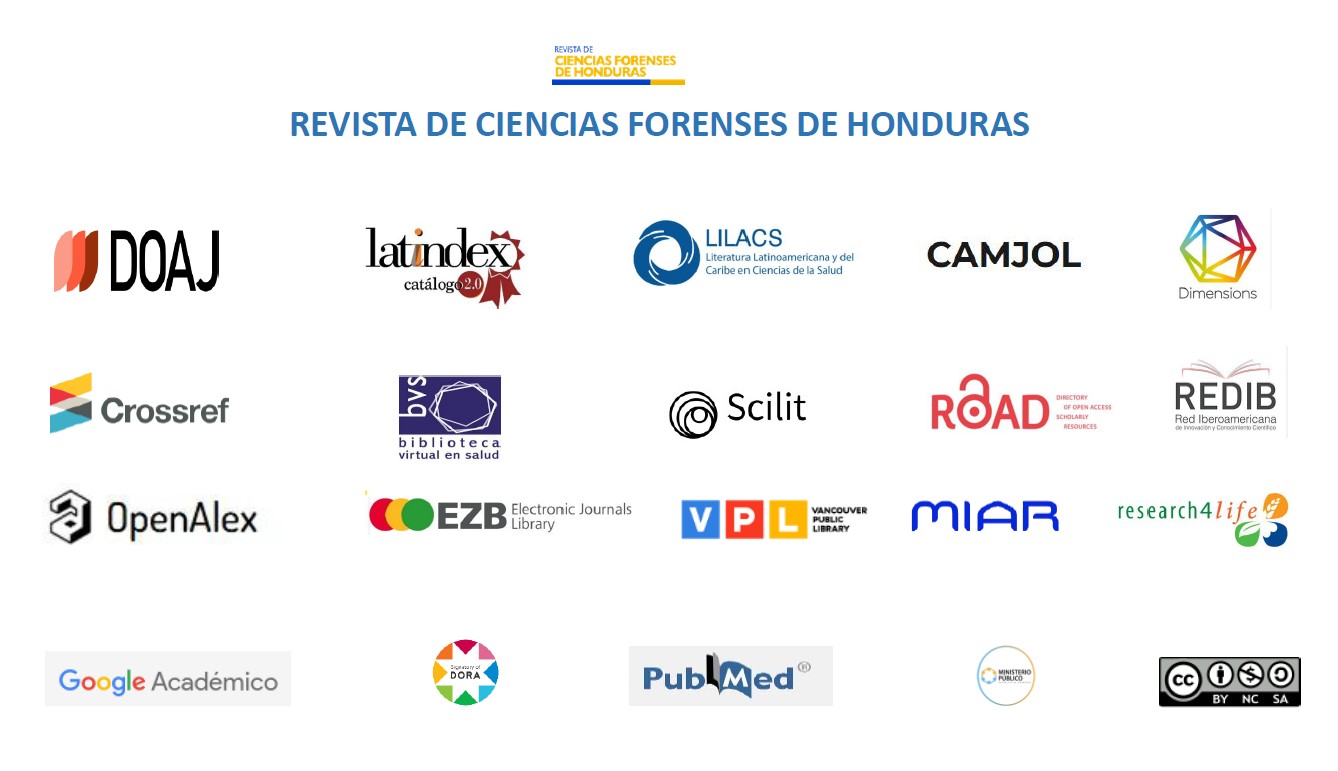Trazas de ADN y su implicancia en la obtención de perfiles genéticos. Revisión bibliográfica
DOI:
https://doi.org/10.5377/rcfh.v8i2.15968Palabras clave:
Genética Forense, Trazas de ADN, Transferencia, Contaminación, ADN-TTPRResumen
Introducción: El aumento en la sensibilidad de las técnicas empleadas ha permitido la obtención de perfiles genéticos a partir de trazas de ADN que se hayan depositado mediante contacto antes, durante o después de la comisión de los hechos investigados. Por otro lado, la contaminación accidental de los indicios biológicos, con la consecuente interpretación errónea de los resultados genéticos, tienen importantes consecuencias en el proceso judicial. Debido a ello, minimizar las contaminaciones que se pueden generar durante algunas de las fases de recolección o análisis genético, como así también la detección de estos eventos, es una prioridad para los laboratorios forenses. Objetivo: analizar las publicaciones más relevantes respecto a las trazas de ADN, los diferentes tipos de transferencia y contaminación que se pueden obtener en una evidencia. Metodología: se realizó la búsqueda en PubMed, del Instituto Nacional de Salud (NIH), y Google Académico usando las palabras clave en español e inglés: ADN de toque, Transferencia de ADN, Contaminación, Trazas, DNA-TTPR, Persistencia del ADN, Perfiles genéticos contaminados. Resultados: se encontraron más de 500 trabajos relacionados a la temática propuesta en esta revisión. El criterio de selección fue el número de citas, el enfoque y el impacto de estos. Se analizaron 71 artículos donde evaluaron la composición de las muestras de contacto y el origen del material genético que contienen. Además, de las metodologías de recolección, análisis de dichas muestras, la importancia que tiene la transferencia y contaminación del ADN en distintos escenarios posibles. Conclusión: existe riesgo de transferencia de ADN que puede conducir a resultados erróneos, por lo tanto es importante asegurar la actualización de los procedimientos de la práctica y brindar la capacitación adecuada para garantizar que el personal policial y del que recolecta indicios sea consciente de los riesgos de contaminación y de los diferentes mecanismos de transferencia de material genético.
Descargas
1038
HTML 112
Publicado
Cómo citar
Número
Sección
Licencia
Derechos de autor 2022 Lucio Alfonso Chirillano, Paola Gisele D’Agostino de Salazar, Pablo Elías De la Sota, Marta Cecilia Etcheverry, Cristian Ariel De Candia, Cristian Ariel De Candia

Esta obra está bajo una licencia internacional Creative Commons Atribución-NoComercial 4.0.
El autor conserva los derechos de autor bajo los terminos de una licencia CC NC 4.0






